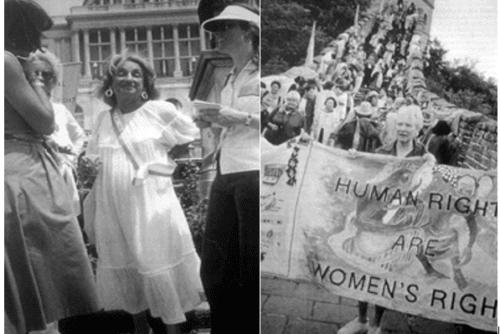Halle Berry 911
It’s hard to believe that it’s been ten years since the black feminist trickster-playwright-turned-screenwriter-turned-novelist Suzan-Lori Parks created a comedic heroine who actively grappled with her own sexual exploitation in the film industry. Although Parks’s collaboration with director Spike Lee was allegedly a fraught one (and how could it not be? See his film She Hate Me), the film that would result from their creative involvement with each other—Girl 6—would nonetheless produce one of the most memorable scenes of black female nudity in recent memory, save for the now infamous coital scene in the Halle Berry classic Monster’s Ball. 1
In Parks and Lee’s rendering of spectacular black female nudity, the fictional heroine, an actress know only as “Girl 6,” sits uncomfortably in the glare of camera lights during a screen test and struggles to deliver her monologue for a rude and rapacious director played by Quentin Tarantino. In the icy glare of a camera-driven inquisition, “6” (as she’s called in the script) is coaxed into disrobing in a move that hurtles the scene into the violence of history. With her dress pulled down around her waist and in the throes of a dizzying elixir of resignation, rage, and disbelief, our heroine morphs into Sojourner Truth, Frederick Douglass’s Aunt Hester, and the slave “Delia” in a well-circulated antebellum daguerreotype from South Carolina, 2 all canonical representations of violation and toplessness. It is 1996, but the film suggests (as if we needed reminding) that it might as well be 1846, 1896, or 1926 at the Folies Bergère. Indeed, black female corporeality remains in danger of being captured in the void of someone else’s fantasies, caught in the eye/I of someone else’s lens.
Yet Parks’s screenplay posits a solution to this harrowing situation in the deliciously histrionic scene that immediately follows this first one. “6” meets up with her acting teacher (played by the remarkable Susan Batson, whose only crime in life is that she put Sean “Puffy” Combs on Broadway). And I argue that it is the acting coach’s words that crackle with the spirit and ethos of Josephine Baker’s brilliance as a comic corporeal performer.
6: [mumbling] “The reason I consented to doing this is because I wish to clear my name …”
Coach: [yelling in disgust] ” … Where is the pain? … C’mon! It needs a bottom! Where’s the bottom! What’s this shallow shit? A bottom!”
6: “No! I can’t think—”
Coach: [yelling with more frustration] “… Drop into the pain! DROP-INTO-THE-PAIN! …”
6: “I can’t think straight—”
Coach: “Acting is about doing and feelings! Drop into the pain!…”
6: [mumbling her lines once again]
Coach: [mocking and mimicking]: “The only reason. The only reason. The only reason!”
6: “Look, I went into an interview, big Hollywood interview, and this asshole tells me to take off my shirt.”
Coach: [yelling] “So what?!!! So what?!!! SOOO WHAT! GROW UP! Grow up now!”
6: “What are you talking about?”
Coach: “I’m talking about you growing up. I’m talking about you facing the reality of this business.”
6: “Which is?”
Coach: “Taking off your top, BABY!”
6: “That has nothing to do with the work. You taught me about the work.”
Coach: “It has plenty to do with the work! That’s the business, honey bunch! MAKE IT ART! Turn it into something special! Do you get it? …. Are we going to grow up? …” 3
With a heated, Eartha Kitt purr, 6’s instructor demands that she locate what the monologue lacks, and she implores her pupil to “DROP into the PAIN!” Passionately, she commands her to recognize the gaping hole in her performance—to realize that it, in fact, “NEEDS A BOTTOM.”
- Girl 6, dir. Spike Lee, starring Theresa Randle, Isaiah Washington, and Spike Lee, 20th Century Fox, 1996. Monster’s Ball, dir. Marc Forster, starring Halle Berry, Billy Bob Thornton, Mos Def. Lion’s Gate Films, 2001.[↑]
- For more on Sojourner Truth, see Nell Painter, Sojourner Truth: A Life, A Symbol (New York: Norton, 1997). See also Daphne A. Brooks, Bodies in Dissent: Spectacular Performances of Race and Freedom, 1850-1910 (Durham, NC: Duke UP, 2006), 155-160. The spectacular politics of Frederick Douglass’s description of the topless torture of his Aunt Hester has been explored at length by several scholars. See Frederick Douglass, Narrative of the Life of an American Slave (New York: Penguin, 1982). Saidiya Hartman, Scenes of Subjection: Terror, Slavery and Self-Making in Nineteenth-Century America (New York: Oxford UP, 1997). Fred Moten, In the Break: The Aesthetics of the Black Radical Tradition (Minneapolis, MN: University of Minnesota Press, 2003).[↑]
- Girl 6, dir. Spike Lee, starring Theresa Randle, Isaiah Washington, and Spike Lee, 20th Century Fox, 1996.[↑]



